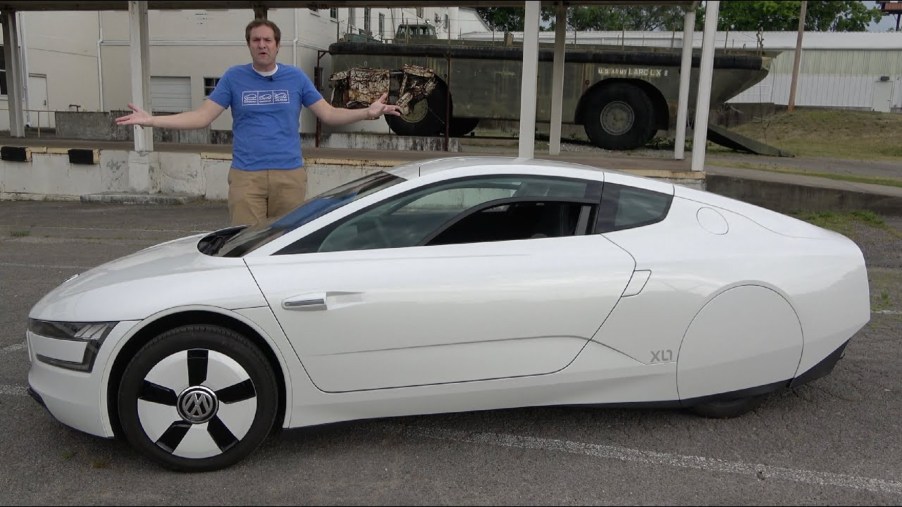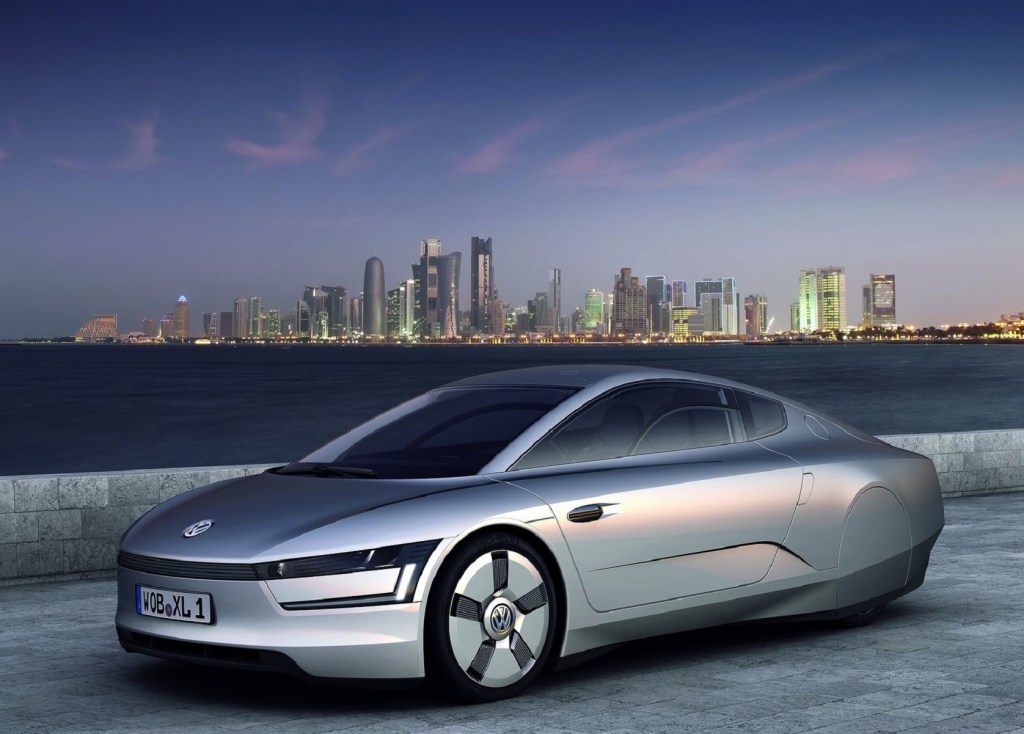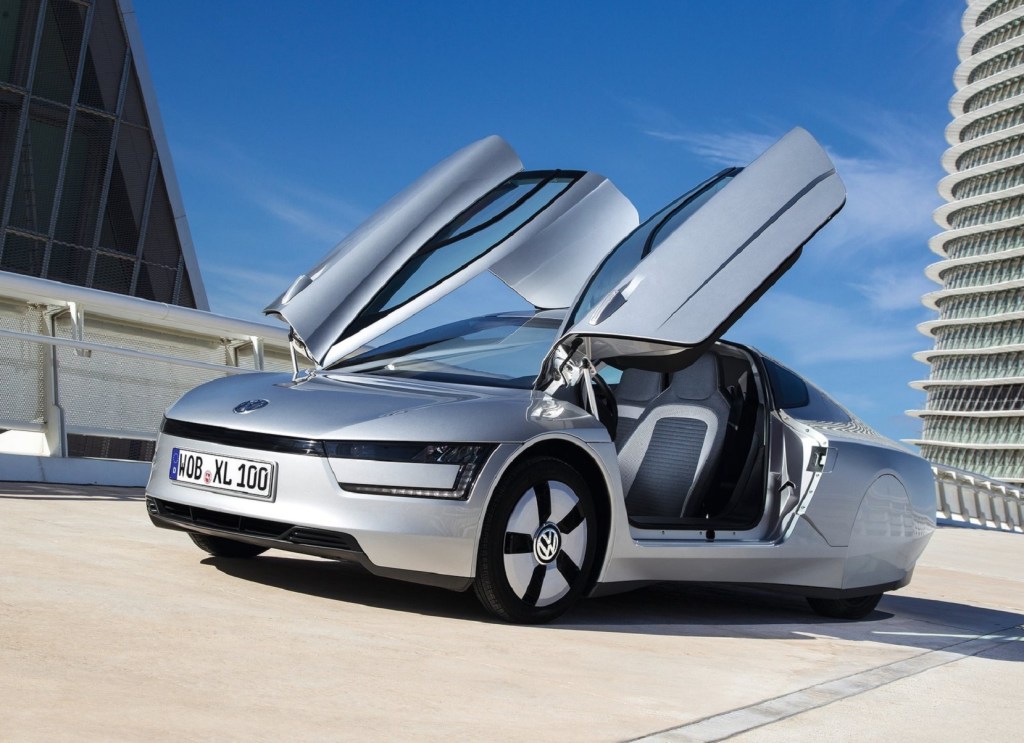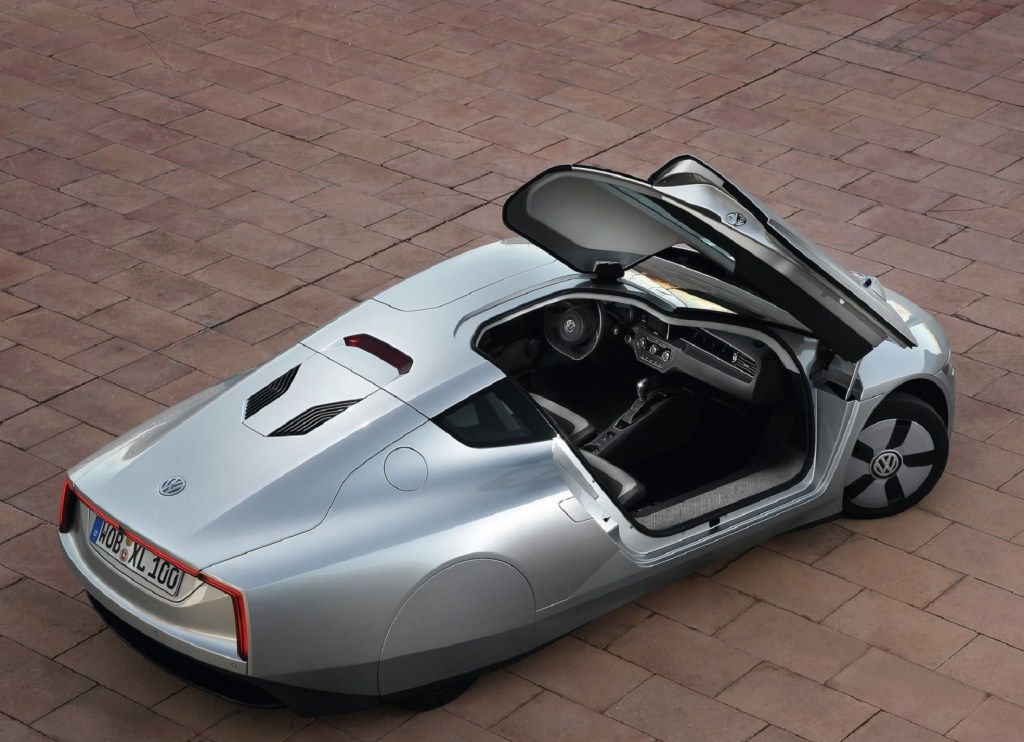
Doug DeMuro Drives a $150K, 260-MPG Volkswagen Supercar
These days, the idea of a hybrid supercar isn’t that far-fetched; Ferrari has several, after all. Modern hybrid supercars, though, are understandably built for maximum performance. But what about one focused just as intently, not on speed and sportiness, but rather fuel efficiency? And this isn’t a hypothetical question, because a real production car like that exists. It’s called the Volkswagen XL1, and recently, YouTuber Doug DeMuro got to drive it.
The Volkswagen XL1 is a hybrid supercar designed for maximum efficiency…with a diesel

While Volkswagen is pursuing EVs as intently as the rest of the automotive industry today, that wasn’t the case a decade ago. This was before Dieselgate when EVs were still relatively fringe, and many automakers still thought of diesel as clean and, most importantly, efficient. But diesel alone wasn’t quite efficient enough for VW’s so-called ‘1-Liter car.’
Back in 2002, then-VW CEO Ferdinand Piëch wanted the company to design a car that could travel 100 kilometers on one liter of fuel, Car and Driver explains. And the following years saw a series of concepts devoted to this ‘1-Liter car’ goal. The last of these was the 2011 Volkswagen XL1 Concept, a two-seater with a diesel-hybrid powertrain that VW claimed could go 100 kilometers on 0.9 gallons of fuel. That’s the equivalent of 261 mpg by European standards.
However, the Volkswagen XL1 didn’t stay a concept. In 2013, the German automaker made a production version for the general public. And it lost none of its extreme focus on efficiency in the process.
How VW made a 261-mpg eco-supercar

Like the 2011 concept, the production Volkswagen XL1 has a mid-mounted diesel-hybrid powertrain. It consists of an 800cc two-cylinder turbodiesel engine linked to an electric motor connected to a 5.5-kWh battery pack. The system makes 68 hp and 103 lb-ft of torque and drives the rear wheels via a seven-speed dual-clutch automatic, Road & Track reports.
Given that the Volkswagen XL1 tops out at 99 mph and goes 0-60 mph in 12.7 seconds, it might not seem like a supercar. But it is, MotorTrend says, just “a supercar of a different sort.” It’s just that its supercar-esque features are there to help it burn less fuel rather than accelerate faster.

To save weight, the Volkswagen XL1 has a carbon-fiber tub as well as carbon-fiber body panels and rollbars. Its suspension is made of aluminum, while its wheels and transmission case are made of magnesium. And while it has regen-equipped carbon-ceramic brakes plus a thinner windshield, it has hand-cranked windows and manual steering. VW even gave the car a lighter paint job to cut its curb weight, Car and Driver notes. But it worked: the Volkswagen XL weighs just 1753 pounds.
Besides its mid-engine layout, the two-seater XL1 also sports supercar-appropriate butterfly doors. It also rides 0.5” lower than a Lamborghini Gallardo and has side-view cameras instead of mirrors. But none of these things are there for looks. The low ride height and sleek body—with rear-wheel covers—give the Volkswagen XL1 a 0.189 drag coefficient. That makes the XL1 more aerodynamic than a new Tesla Model S, Hagerty says.
Getting behind the wheel of a Volkswagen XL1 “feels like you’re driving the future,” Doug DeMuro says
The Volkswagen XL1 might be a sleek, futuristic-looking hybrid supercar, but it still uses a conventional VW key, Doug DeMuro notes. And there’s more regular Volkswagen switchgear scattered around the rest of the car. The gauge cluster, steering wheel stalks, HVAC controls, and shifter wouldn’t look out of place in a Golf or Jetta.
However, as Doug DeMuro shows in his video above, the Volkswagen XL1 is tremendously quirky. For one, not only does it not have side-view mirrors, it lacks a rear-view mirror, too. Though admittedly, given that the XL1 doesn’t have a rear window, having a rear-view mirror would be unnecessary. But the car does have a rear trunk.
The car also doesn’t have a glovebox. There’s just a net, along with a small slide-open cubby and a little compartment behind the driver’s seat. And speaking of seats, while the XL1 is a two-seater, the passenger’s seat isn’t level with the driver’s seat. Instead, the seats are offset from each other, with the passenger sitting further back. Also, the passenger’s seat is fixed in place.
While the Volkswagen XL1 has a touchscreen, it’s a Garmin unit. But it has a few extra features besides just the radio and navigation systems. It also displays the XL1’s current MPG and which driving systems are active. The latter feature is useful because the car can operate in EV-only mode for 30 miles.
Although the Volkswagen XL1 isn’t necessarily the most practical vehicle, “it would be a great commuter [car],” Doug DeMuro says. The interior is fairly spacious, all things considered, and the trunk is “pretty big.” To be sure, the side-view cameras “are a little bit trippy,” he notes, especially since their display screens are lower than the mirrors usually are. And “it’s not exactly the fastest thing in the world.” But despite its looks, the XL1 drives like a conventional hybrid. And even on the EPA’s tougher test cycles, it still gets over 200 mpg.
How much does a Volkswagen XL1 cost?
Volkswagen never intended for the XL1 to be a volume seller, even before the effects of Dieselgate. The German automaker made just 250 examples and only sold 200 of these to the general public. And the diesel-hybrid supercar was only sold in Europe; the one Doug DeMuro drove was donated to the Lane Motor Museum in Nashville, TN.
Plus, the XL1 wasn’t and still isn’t cheap. It originally sold for the equivalent of $146K. And examples can sell for almost as much at auctions these days, Top Gear notes.
Nevertheless, while the XL1 isn’t a conventional hybrid supercar, as an exercise in extremity, it deserves the title.
Follow more updates from MotorBiscuit on our Facebook page.


